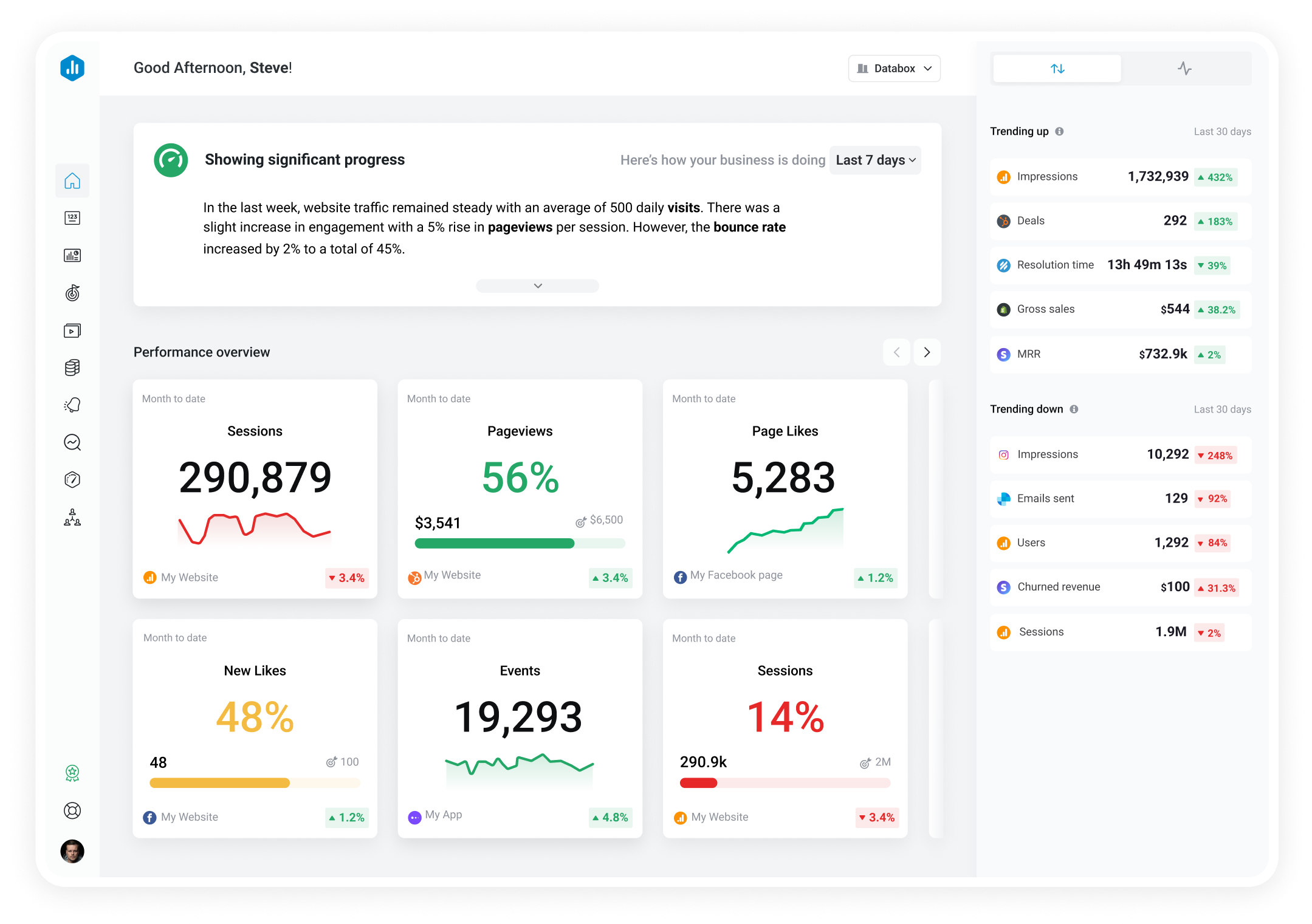Track all of your key business metrics from one screen
GET STARTED
 QuickBooks
Current Assets (Accrual) by Subcategory
QuickBooks
Current Assets (Accrual) by Subcategory This metric segments accrual-based current assets into subcategories like receivables, inventory, and prepaid expenses, offering detailed insight into asset allocation in QuickBooks.
With Databox you can track all your metrics from various data sources in one place.

Used to show comparisons between values.
Databox is a business analytics software that allows you to track and visualize your most important metrics from any data source in one centralized platform.
To track Current Assets (Accrual) by Subcategory using Databox, follow these steps:
 Goals
Goals Scorecards
Scorecards Metric Digest
Metric Digest Metric Builder
Metric Builder Data Calculations
Data Calculations Performance Screen
Performance Screen